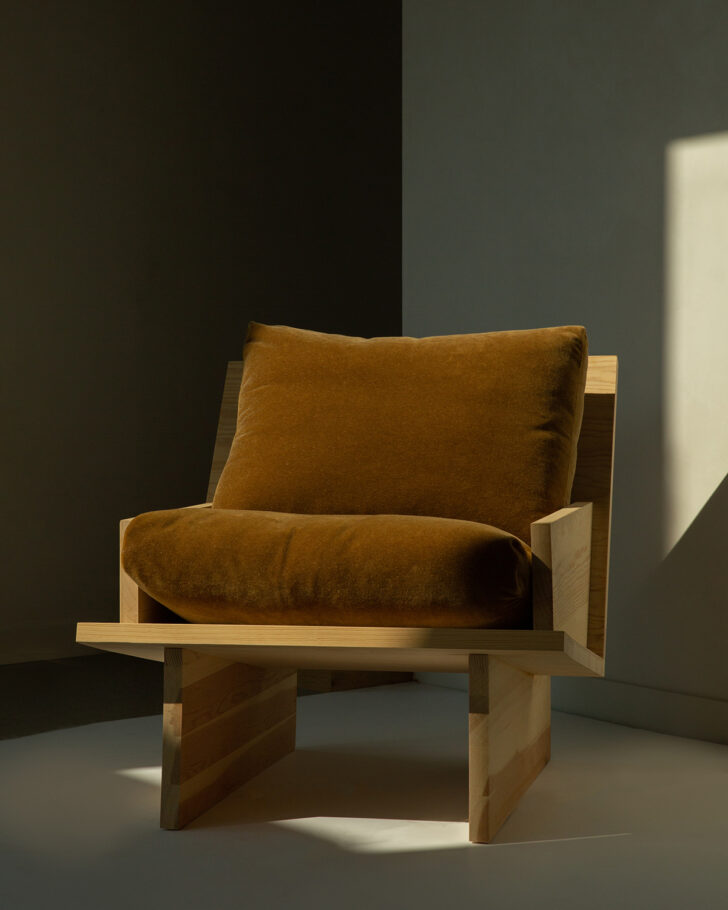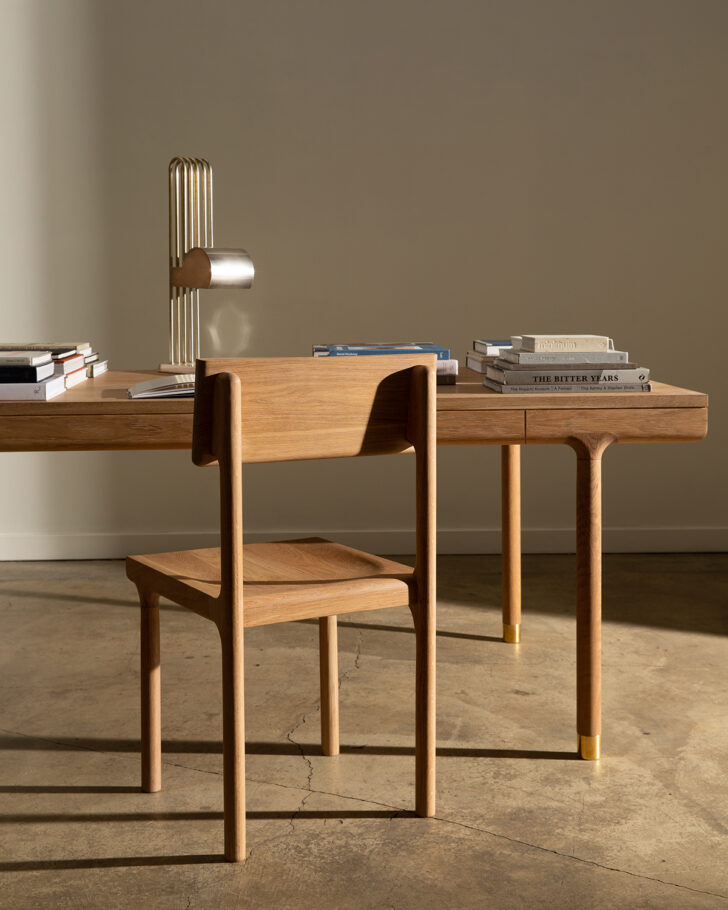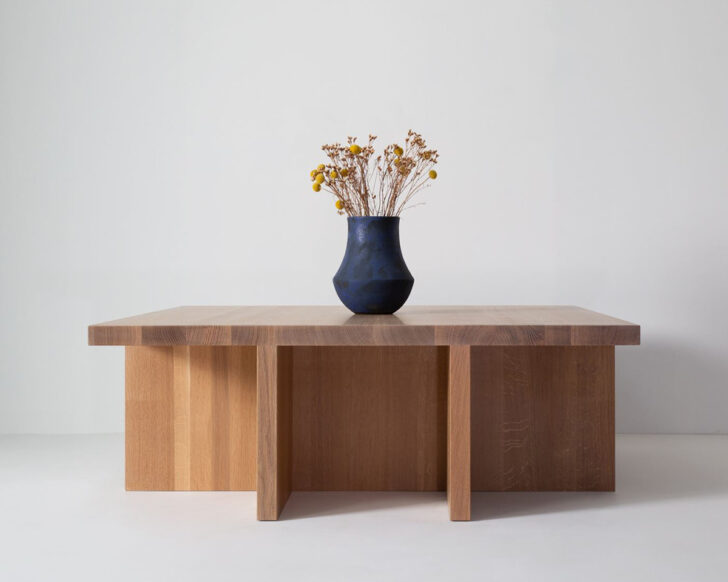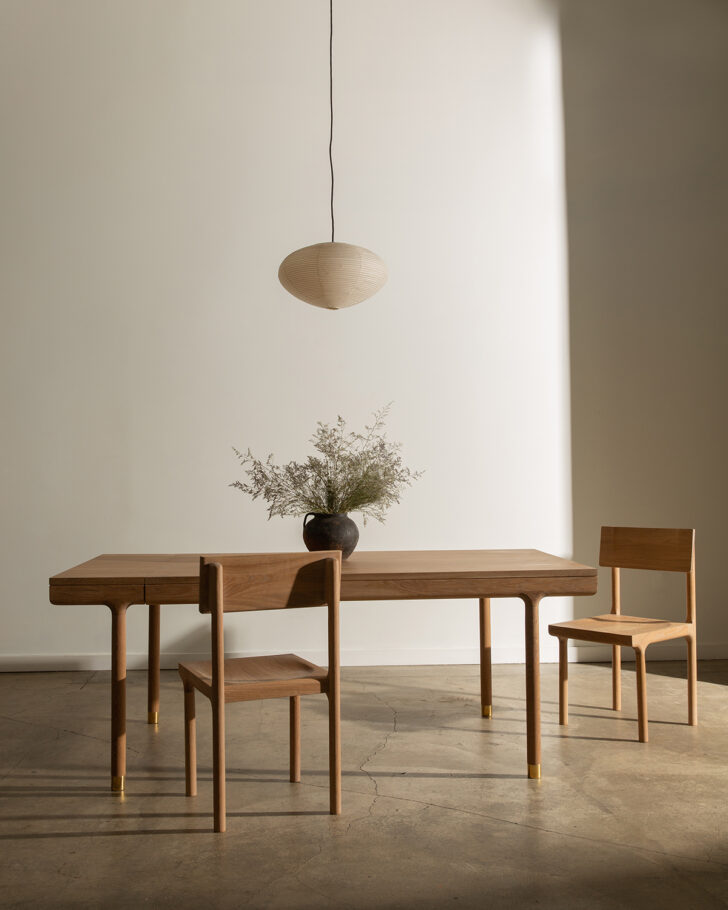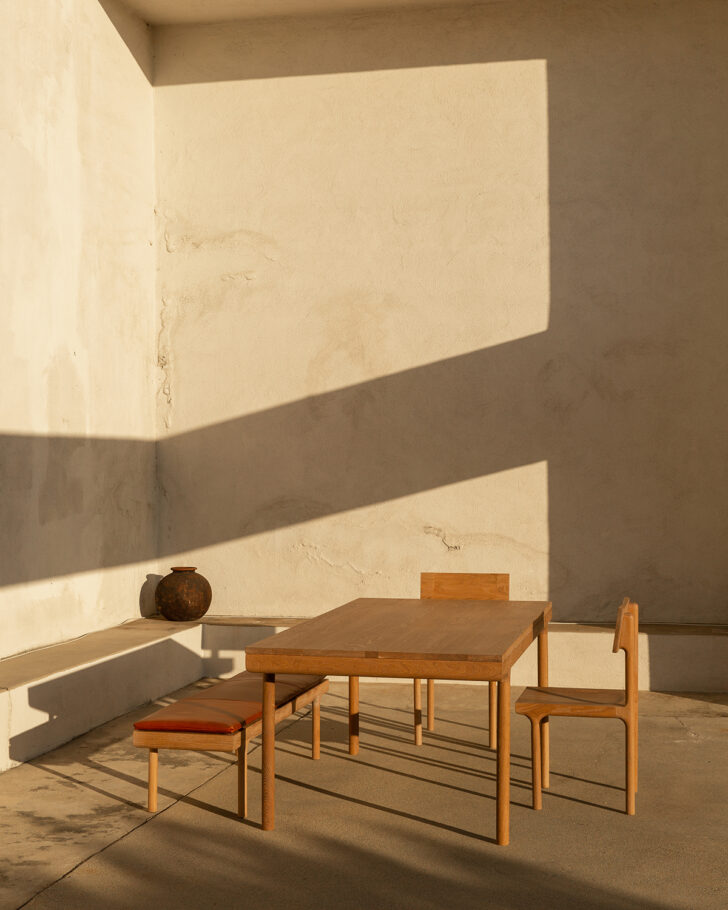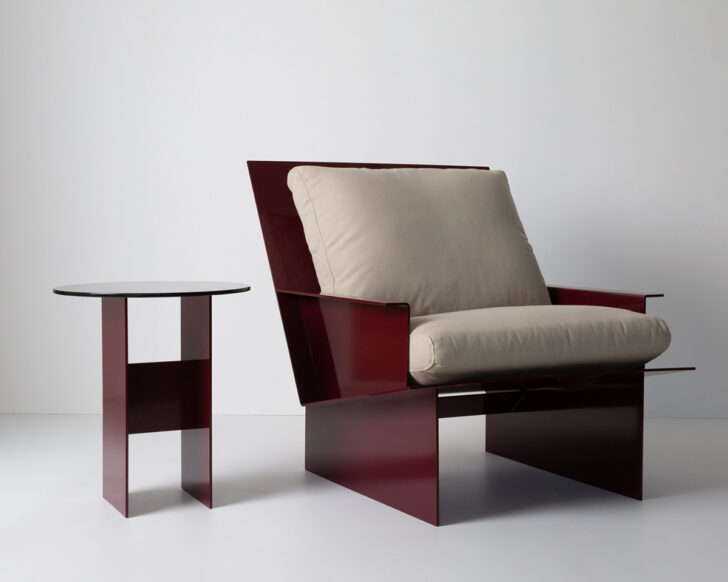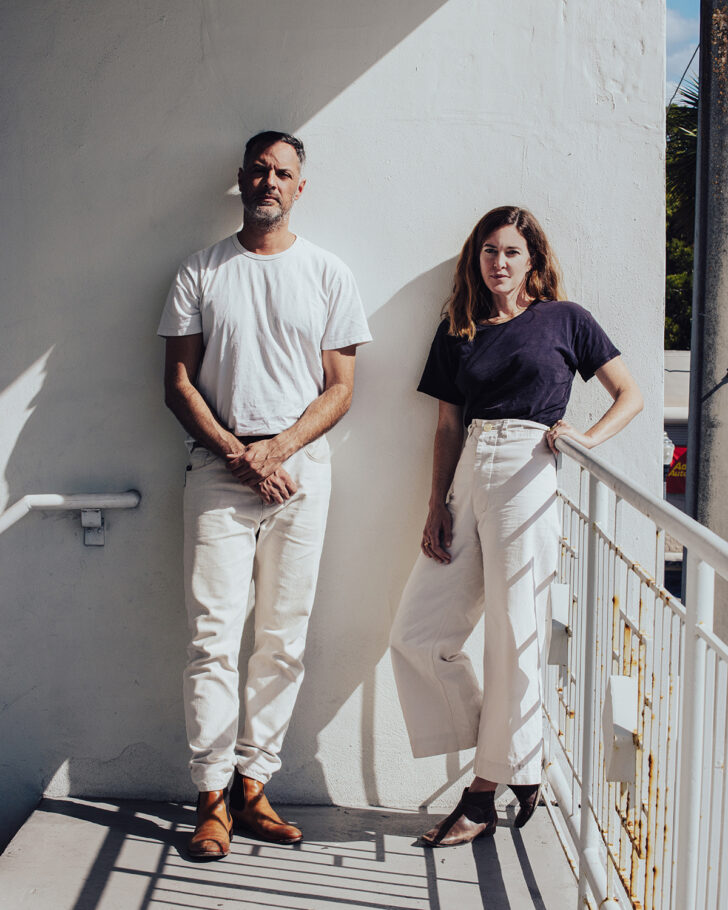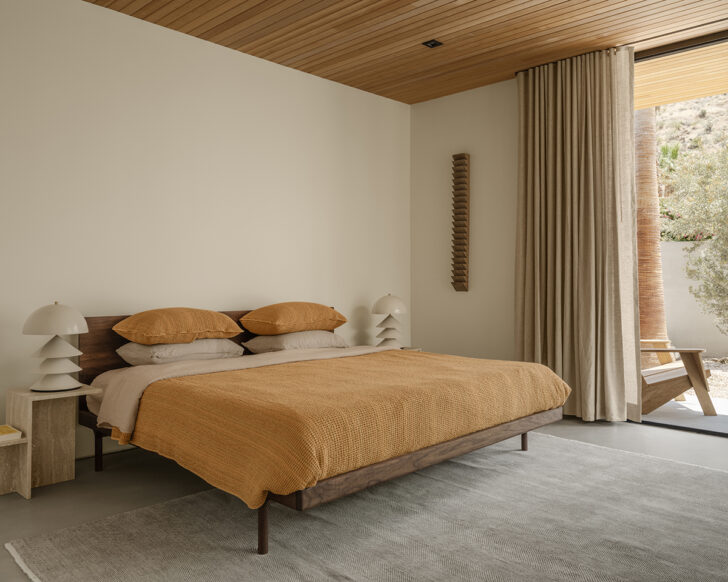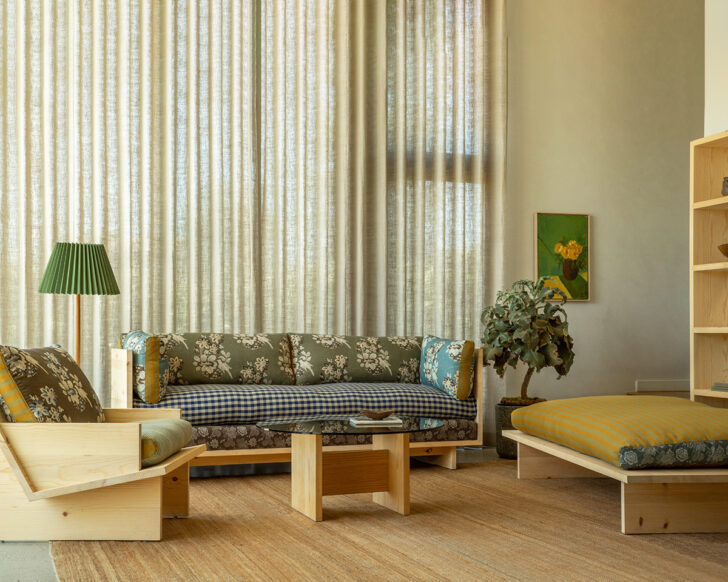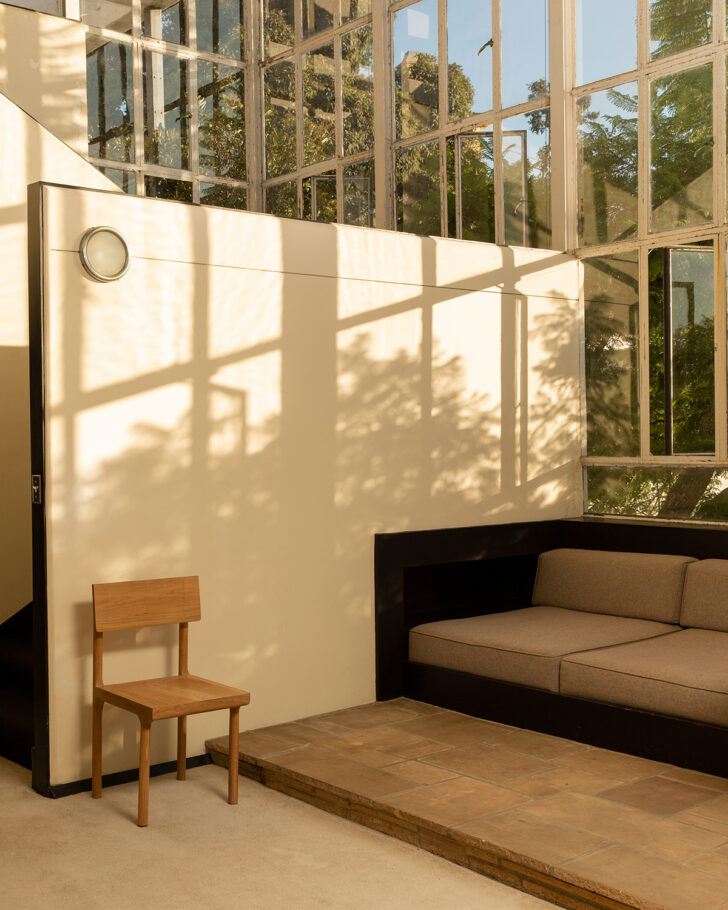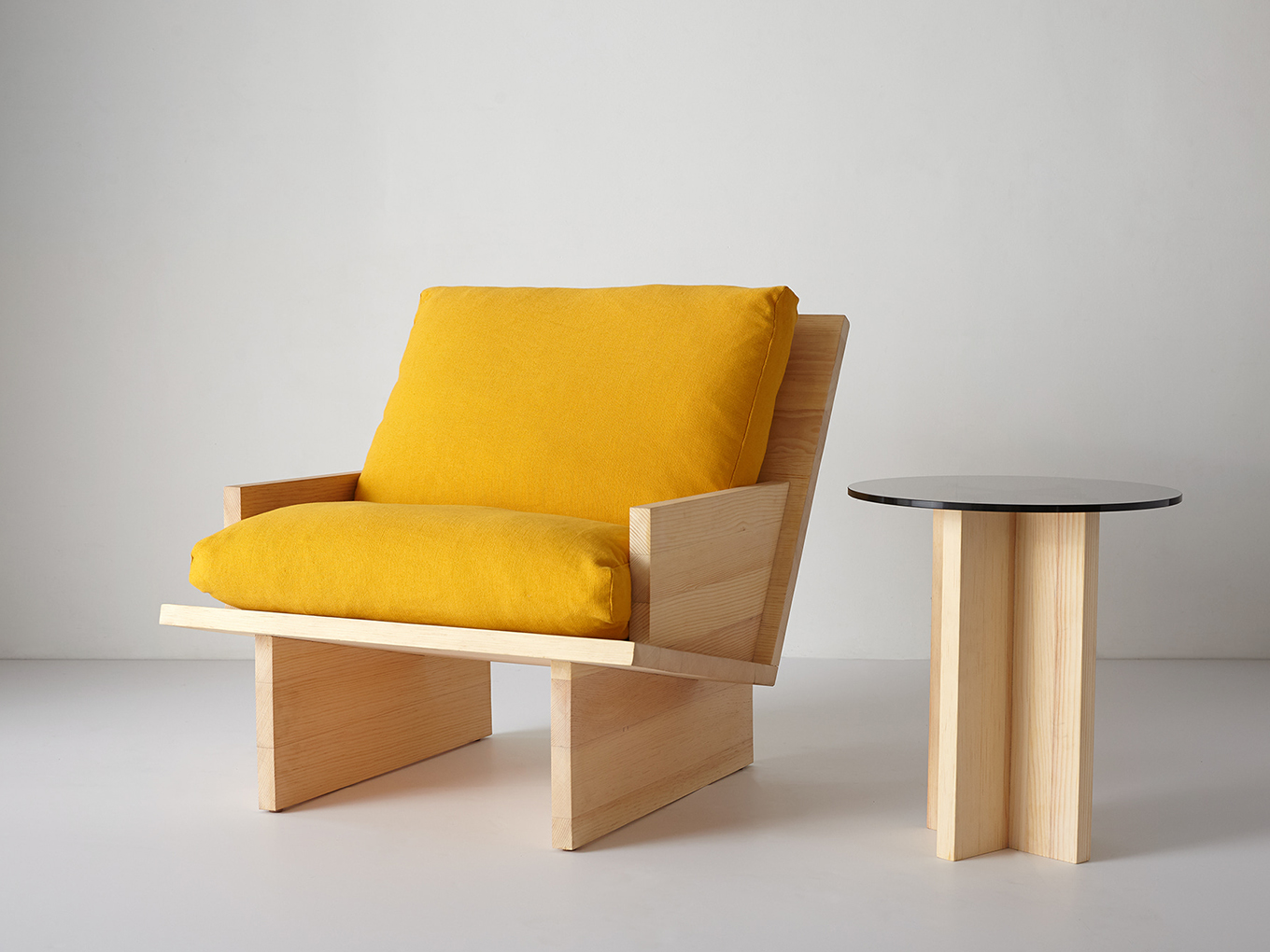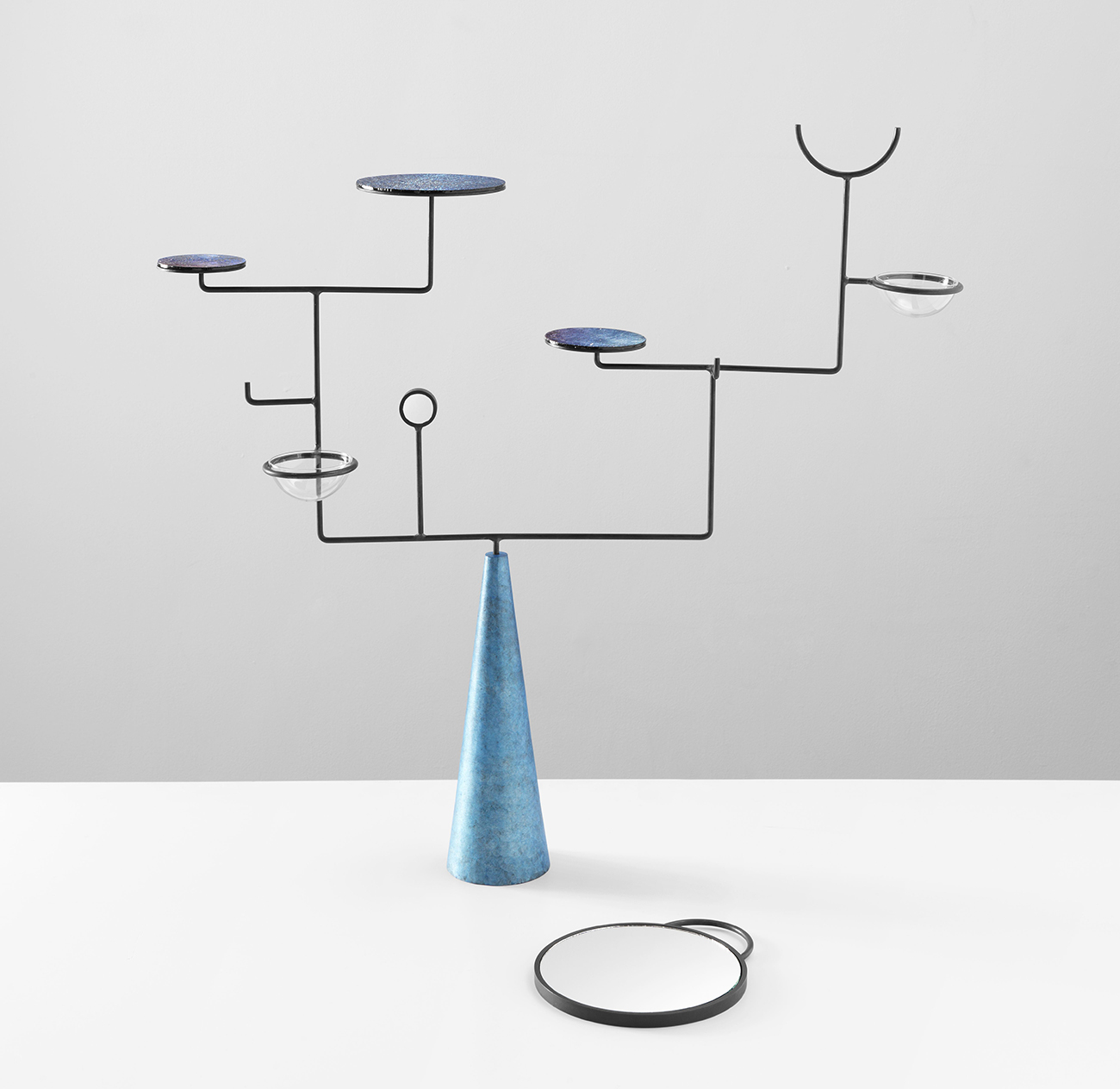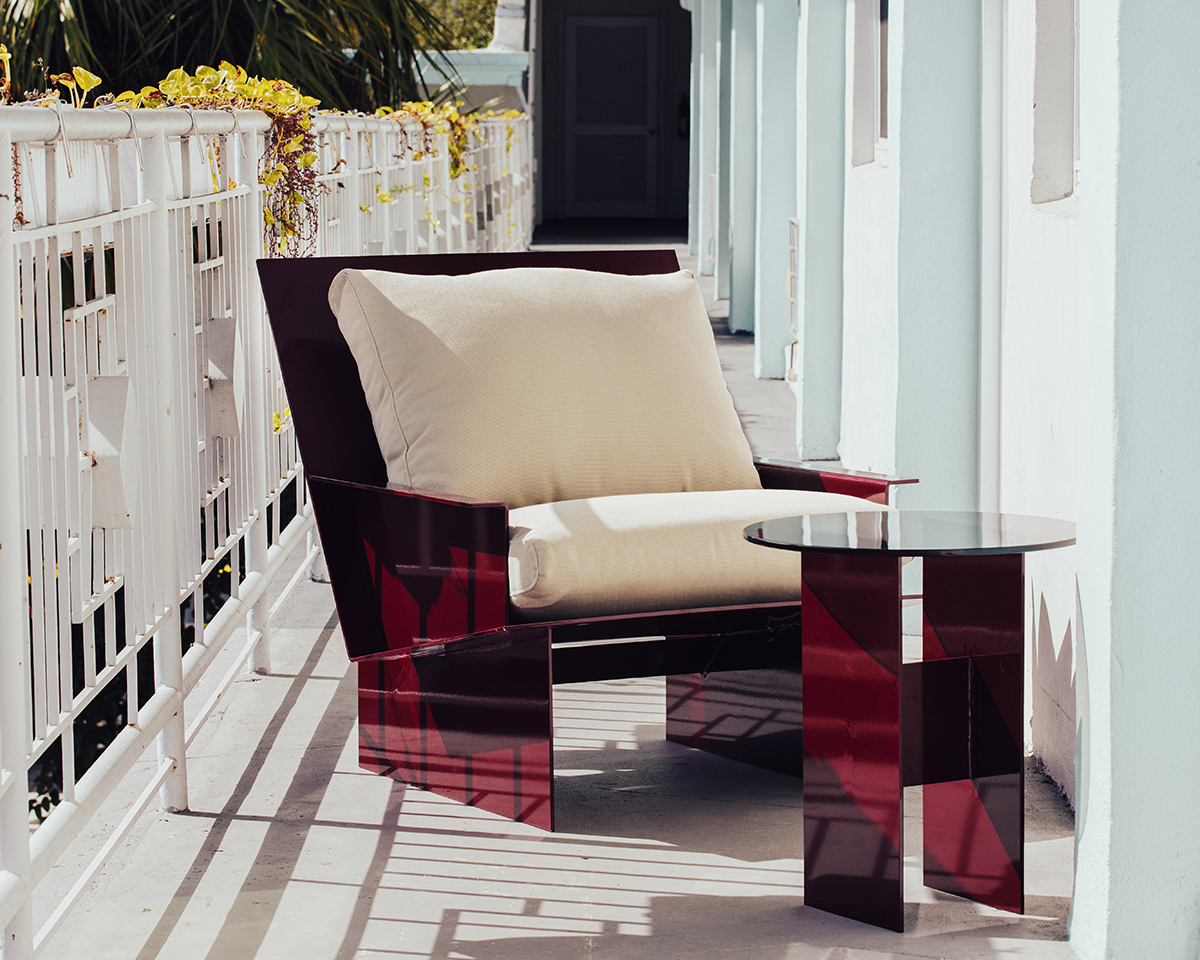
03.28.24
Q+A
Architectural and Archetypal, Kalon Pieces Are Defined By Their Thoughtful Details
Since 2007, Michaele Simmering and Johannes Pauwen have been producing work that is as poetic as it is practical through their Los Angeles studio, Kalon. The studio borrows its name from an Ancient Greek concept of ideal beauty that comprises both physical and moral aspects. It’s a high bar to set. In their practice, Simmering and Pauwen take a principled approach that seriously considers the environmental and social impact of what they do; “sustainability” has become an overused word, but for Kalon, it’s a true ethos, guiding not only their production process — in terms of the materials and labor involved — but also how their designs exist in the world. These are modern heirlooms meant to last.
The choice of materials is central to any designer, but it’s been particularly important to Simmering and Pauwen — from both an ecological standpoint and an aesthetic one. The understated simplicity of their work relies on and highlights the nature of the materials they’ve used. In the past, that material has largely been wood. With their two new collections — which are now for sale through the Sight Unseen Collection — they’ve made the move to metal. Their Element platform bed pairs brushed aluminum sheets with Douglas fir, fusing angular precision with material warmth; the luster of the metal plays well with the natural grain of the wood. And their new Material Studies collection transforms their existing Rugosa pieces, reimagining the original sugar pine furniture — coffee, dining, and side tables as well as a chair — in a powder-coated aluminum and bronzed glass, suitable for indoors and out. The new chair, for instance, keeps its clean lines and comfort — the seat is meant to be wide enough for you to sit cross-legged and settle in for a good book or conversation — but now there’s a chance to add color, and some drama. At the same time, the powder-coating provides a durable finish that can handle weather.
To celebrate Kalon joining our Collection, we checked in with Simmering and Pauwen to get a sense of what’s changed — and what hasn’t — since we last touched base, and how they continue to make work that speaks not only to the moment but to the future as well.
Since we last spoke, you’ve opened a showroom, embarked on collabs, and released several new collections. How would you say your work has evolved over the last few years?
Johann: In terms of our thinking, our approach hasn’t changed.
Michaele: With the new work, there are processes and questions that have always been present. But we’ve gotten much better at making that accessible — to make it very plain for people to understand that the material choice impacts so many things. It’s a powerful realization, and I think one of the things we’ve been doing since the beginning with Kalon is trying to bring awareness to certain core realities about the way we all interact with material goods.
We are not frivolous in the way that we approach design — a new material is a massive undertaking, and we’re also very earnest about how we use what we use and why we do it. We need to feel really comfortable with what those choices mean and the impact that they have.
I’d love to hear more about that, how you’re making the Material Studies work, which includes new versions of the Rugosa pieces.
M: Material Studies takes existing work and translates it into new materials, letting people see for themselves how deeply it impacts the design.
J: It was a fun project to work on because we were able to take something that was known to us and completely reinterpret it. A lot of people didn’t recognize the pieces even though they have exactly the same silhouette. The way that it reads and the effect of it is so completely different just by switching out the material.
And did it come about because you wanted to adapt the Rugosa to the outdoors or because you specifically wanted to use a new material?
J: We wanted to adapt it to the outdoors. We’d been designing an outdoor collection but getting hung up on the materiality of it. And one of the concepts was to translate the Rugosa collection to the outdoors. Taking a very reduced, neutral collection and making it a little bit more pop-y. Once you add that element of color in the powder-coated aluminum, all of a sudden it makes it this not-neutral, super contemporary piece of furniture.
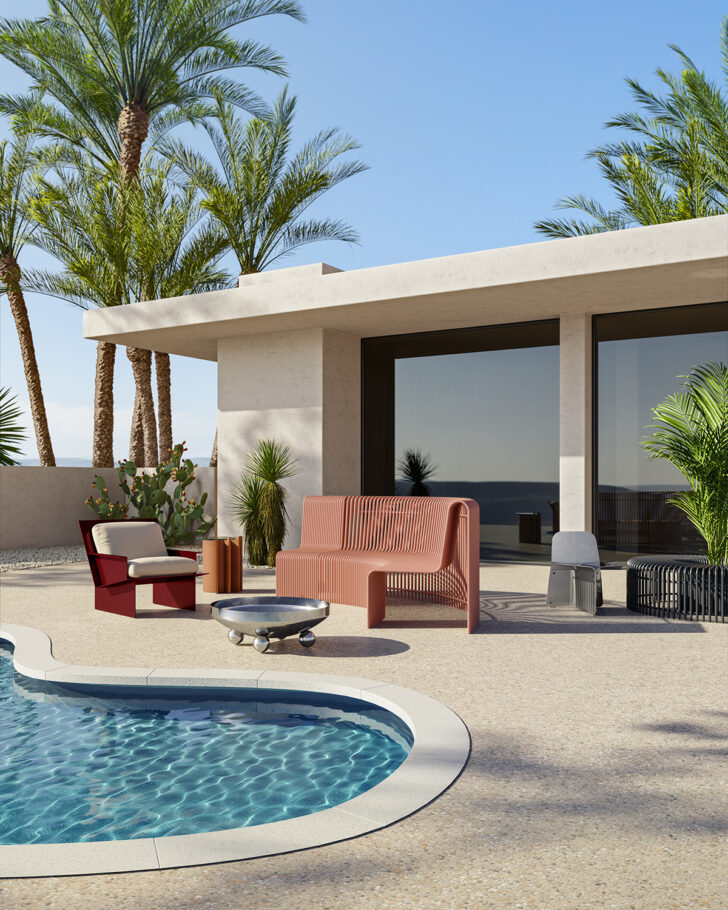
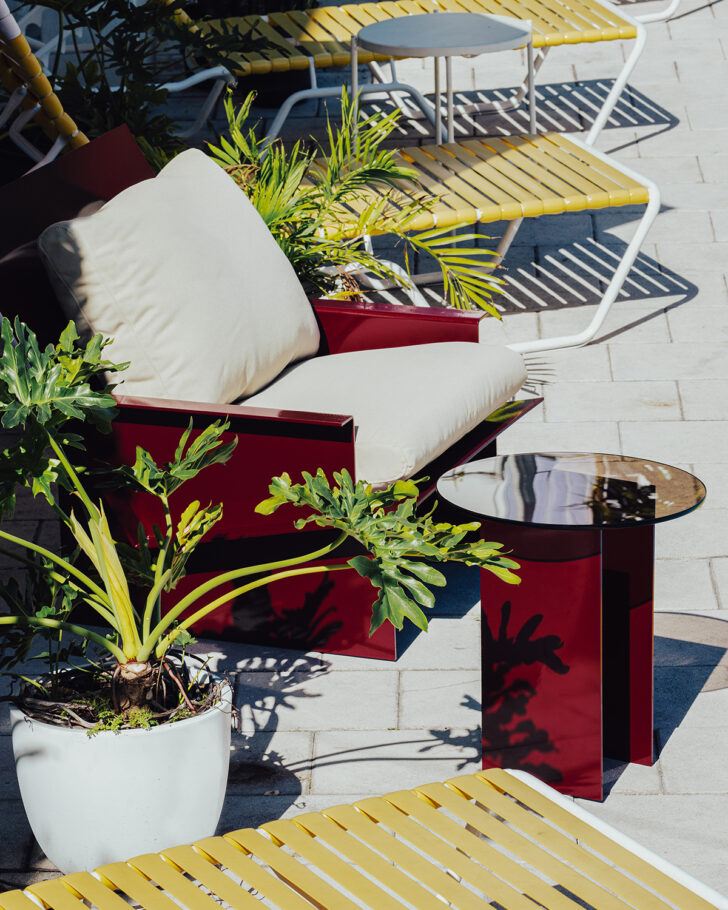
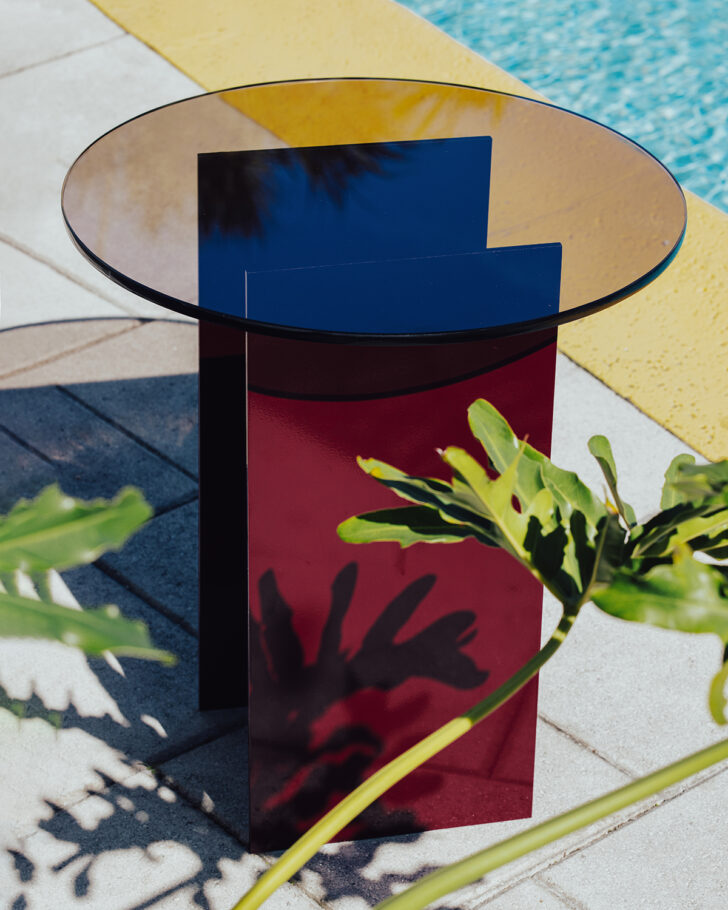
I’ve seen you talk about the idea of planned longevity, as opposed to planned obsolescence, and I love that. Planned obsolescence just makes me so cranky. Aside from using durable materials and solid engineering, how do you design something you think will last, stylistically?
M: When we design something, we’re not thinking about the world as it is today. We’re thinking about 20 to 30 years from now and trying to design work that still feels relevant in that time. And I don’t just mean in terms of aesthetics but also in terms of the questions that we might be grappling with culturally or economically or environmentally. Because you specifically asked about the aesthetic side, one of the things that immediately happens is you begin the pare the work back to this refined simplicity. Anything extra starts to feel like it’s reflecting a current trend or moment of your own personal interest that you might get tired of. It’s like painting your room hot pink. It feels great for a while but within a few months or a year you might be like, Oh my god, this is so crazy.
That we work in partnership helps a lot. It has to pass through two people and we both have to reach a place of comfort with it. But I really think that when you’re striving for longevity or timelessness, you immediately enter a space of archetype because archetypes are sort of forever. And what does it mean to design in that? How do you capture that? I think that that’s so much of how we think about the work.
It’s also about understanding that these are investment pieces. We want people to feel happy with them in every sense — that they’re still working and they’re holding up and that they like them. Versatility is a big thing. Making sure that a piece can move from room to room, from corner to corner, a primary spot, a secondary spot.
One of the really wild things I’ve started to see in the last year is that our cribs have been around long enough that people are contacting us almost on a weekly basis to ask for a hardware part for cribs that have passed through four or five children, through multiple households. That’s a really lovely experience. It’s done exactly what we wanted it to do. It’s nice that they still feel as desirable and relevant to people today. In the nursery world, gender neutrality has become a thing, environmental and ecological concerns are massively important for parents now. So those pieces that were designed 15 years ago still check all the boxes for people today. It’s that kind of thinking. We’ve been around for 16 years now, and it feels like we’re doing something right, if that’s true.
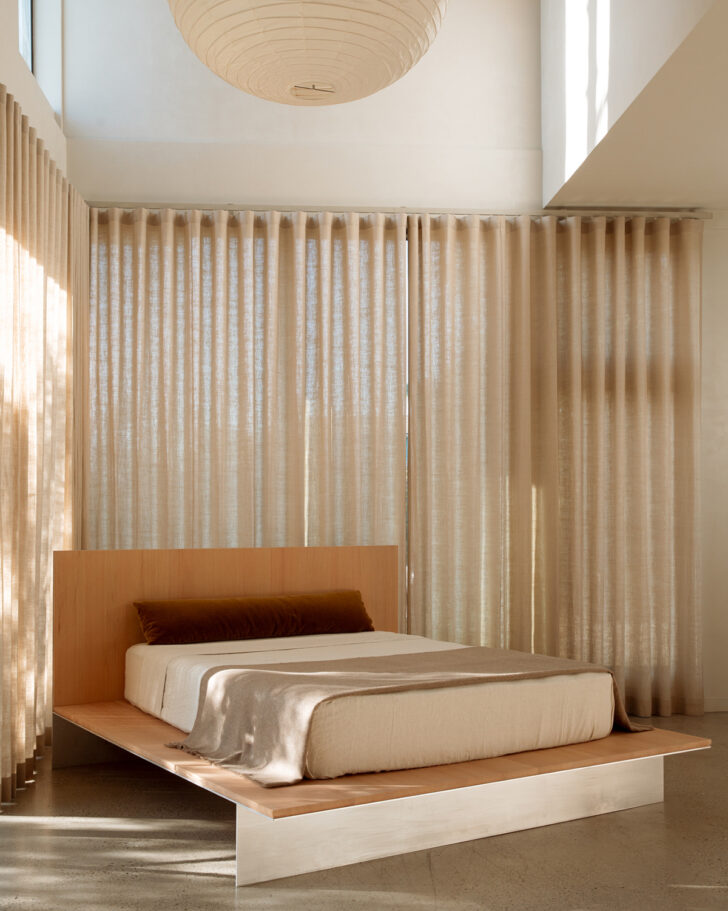
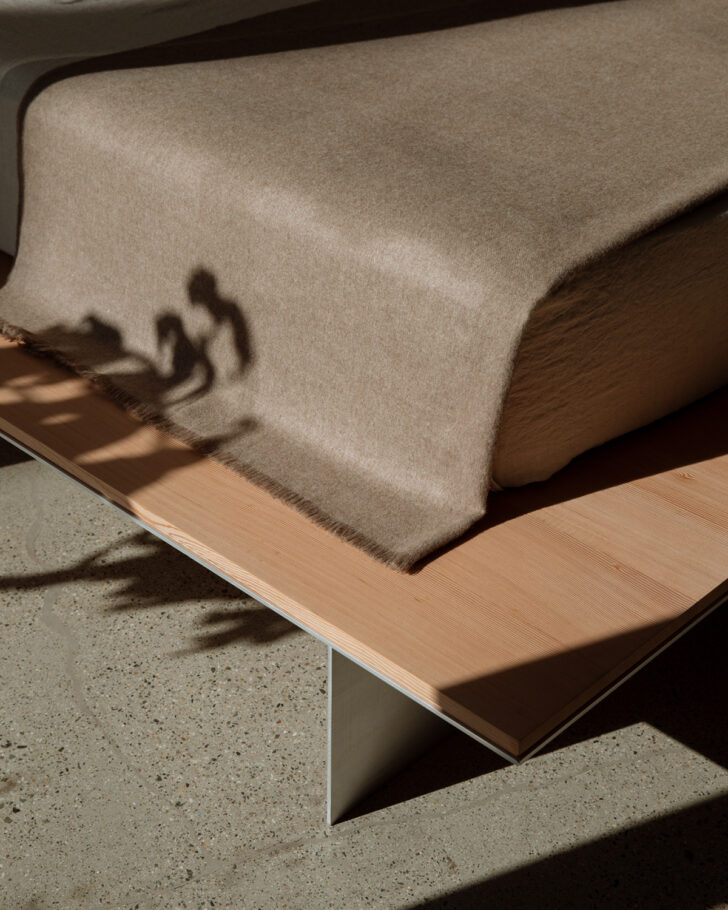
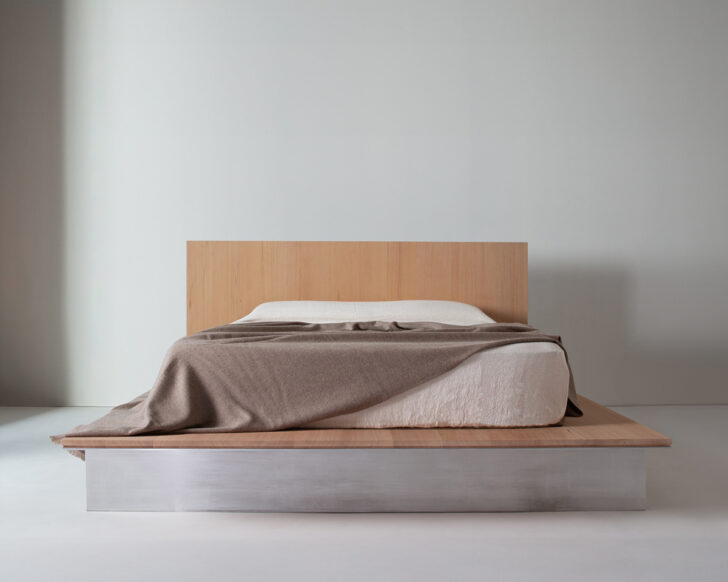
I wanted to ask about what your process is like. And has that changed with the newer collections?
J: Typically, I think we’re interested in a need. In the past it’s been a personal need. Like, oh we needed a sofa, or we needed a bed. That’s how we started the company. We needed a crib and couldn’t find one we liked. We started with four products that we designed for our own home.
We have sort of kept that process alive. What do we want for ourselves? What would be cool? As humans, we’re not so unique. If you come up with something that is relevant to you, it’ll probably resonate with a lot of other people.
M: I think there’s always that question of essentiality, right? With our catalog, we don’t pull things, we don’t design for a season or a year and we don’t discontinue products. They’re designed with that forever hope. It’s still not a very huge catalog of products so it’s still this idea of, Is it essential for us to add that to the collection? We already have a bed, do we need another bed?
J: When we were getting to the Element bed, the challenge was which of the designs to actually produce and why. We probably designed 10 beds with different great aspects. Why choose one over the other if from a design perspective they’re equally great? We end up releasing a fraction of what we’ve designed.
M: It’s a big process to get to that point. That editing, those other designs are all part of that. How you let the other stuff go is a real challenge if there are infinite options and possibilities and materials. How do you make those choices for yourself?
I think maybe it goes back to your question about evolution. I don’t want to sound like we think the older designs aren’t worthwhile anymore, but maybe the evolution was that we could hold space for more than one version of something? Also allowing ourselves to be designers and not hem ourselves in so much. I do think that a lot of that came from both the politics that we work under but also the realities of being a production furniture brand — it comes with a lot of constraints. We didn’t evolve into being a production furniture brand, we started that way. So, it’s allowing ourselves space to have more fun and be more expressive and not be so strict with ourselves about what we can do and when and why. I think that’s probably part of what was happening there. It doesn’t mean we’re compromising.
J: For us, it’s not how do you design something and get it made once. It’s how do you design something that is rational for serial production? You can make a really exquisite $35,000 bedframe but it’s so precious. The idea of putting it into production… At our scale you have to figure out what actually makes sense, what manufacturing processes make sense. It’s breaking out of those constraints a little bit and allowing yourself to let the designer rather than the product manager to come to the fore a little more.
M: I also think from a human perspective, Kalon was started as a What If. Let’s see what we can do with it. And to our surprise it worked. Fifteen or so years later, you’re realizing you’ve done this for so long, you’re not just trying to make a project work anymore. The hope is that we can do more projects and maybe they don’t all meet the requirements of production furniture, but they let us do what we love to do and be more in touch with the creative part of things.
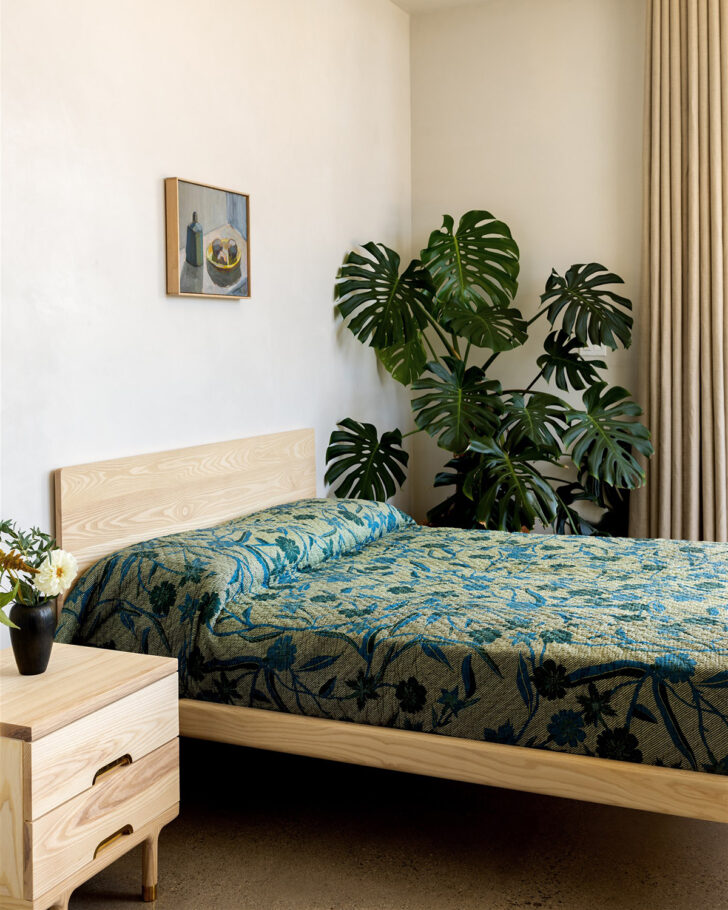
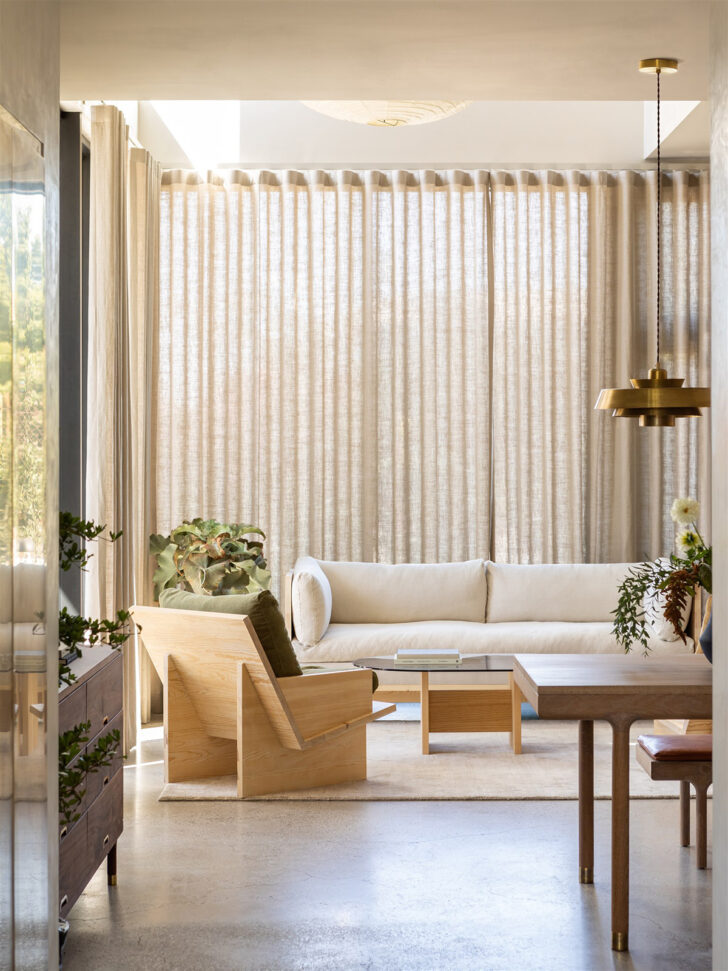
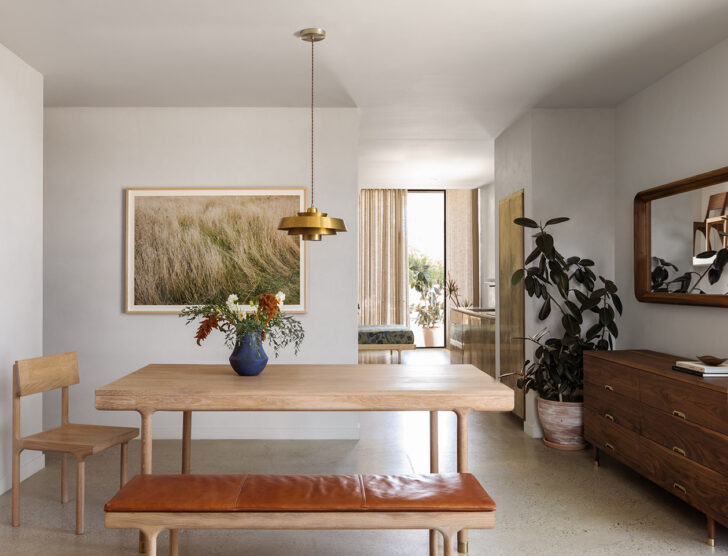
In terms of that creative process, when you’re working together, how does that work between you two?
J: The best process is when we have a very long open conversations about it without actually sitting down and designing. Allowing our imaginations to really take hold. Through conversation these projects take shape and then it’s just a matter of putting them down onto paper.
When putting a piece down on paper, there are criteria that bring shape to it: Is this manufacturable? Can you make this connection work? Michaele has a background in writing so it’s very linguistic and I have a background in industrial design so my process is always very internally visual. So, we’re well matched in that respect.
M: Johann does all the technical drawings and the engineering. He makes multiple iterations based on various constraints and how they’re gonna impact the design. He’s fascinated by problem solving and the engineering of it, which sometimes completely alters where we started.
We pass it back and forth and make the final decision. They’re pretty much done before they go to a shop. We don’t do much physical prototyping.
I’m curious about what’s been inspiring your design work lately. Has it been more politically and socially motivated or has it been more aesthetically centered?
M: The political and social part at this point is like oxygen, we’re just doing it all the time. It’s ingrained in how we operate. It would be difficult for us to not consider that stuff.
J: But at this point it’s not front and center in the process just because it is so much a part of the process.
M: So it’s not a source of inspiration but it’s a constant. The material is [an inspiration] also, because of that elemental simplicity of everything, just to have a new texture and luminosity to work with is really nice.
J: Clearly, sheet aluminum was on our minds; the two things we’ve released were both made out of sheet aluminum. A lot of inspiration comes from the material itself and if there’s a technology or manufacturing process that we’re exposed to, which usually relates to material as well, that is an impetus for creating something.
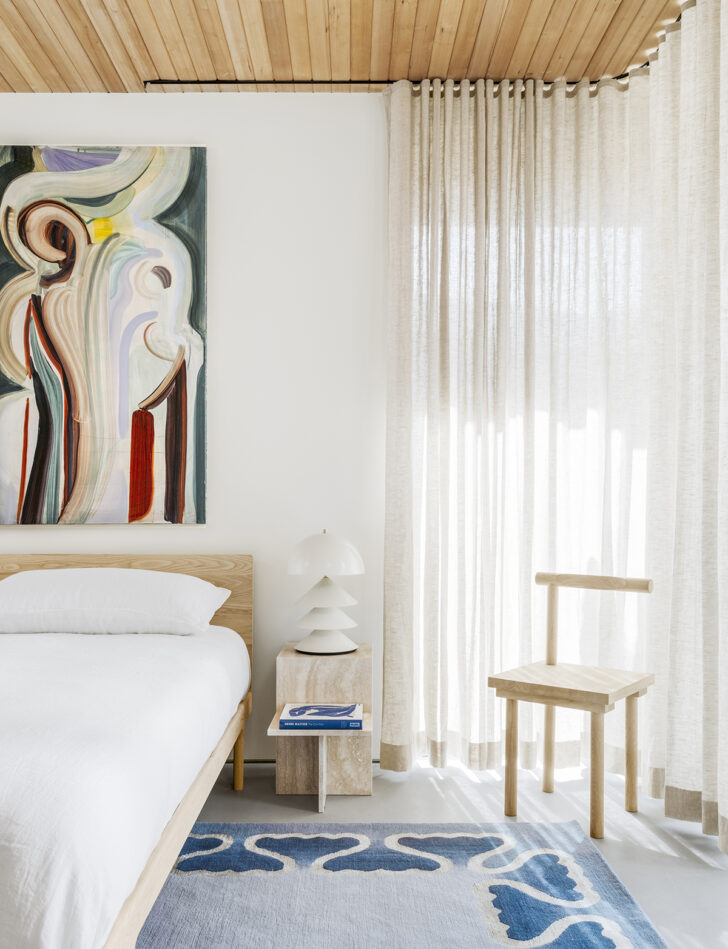
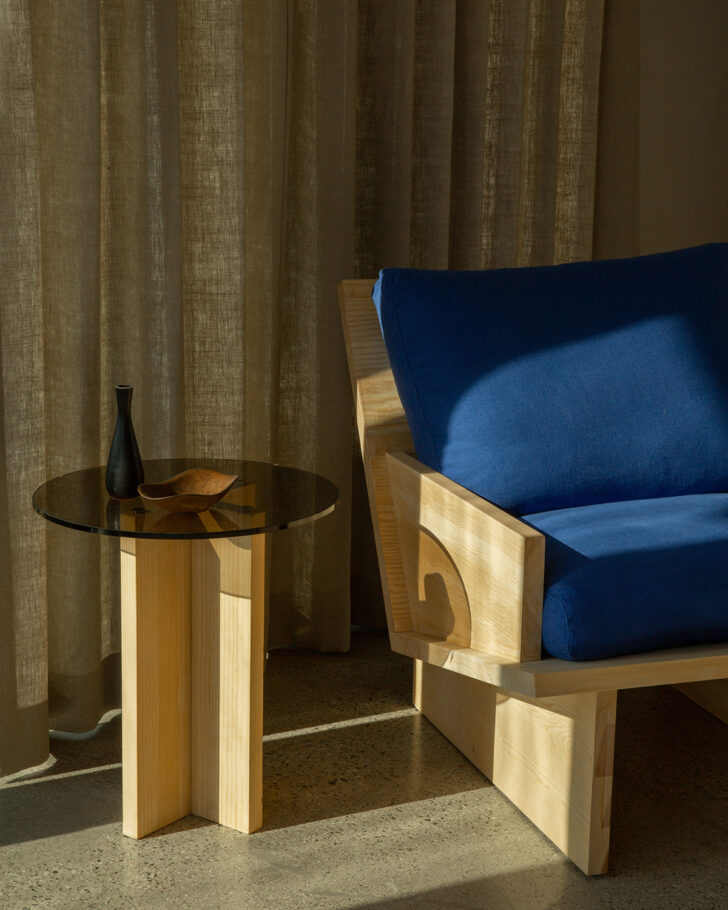
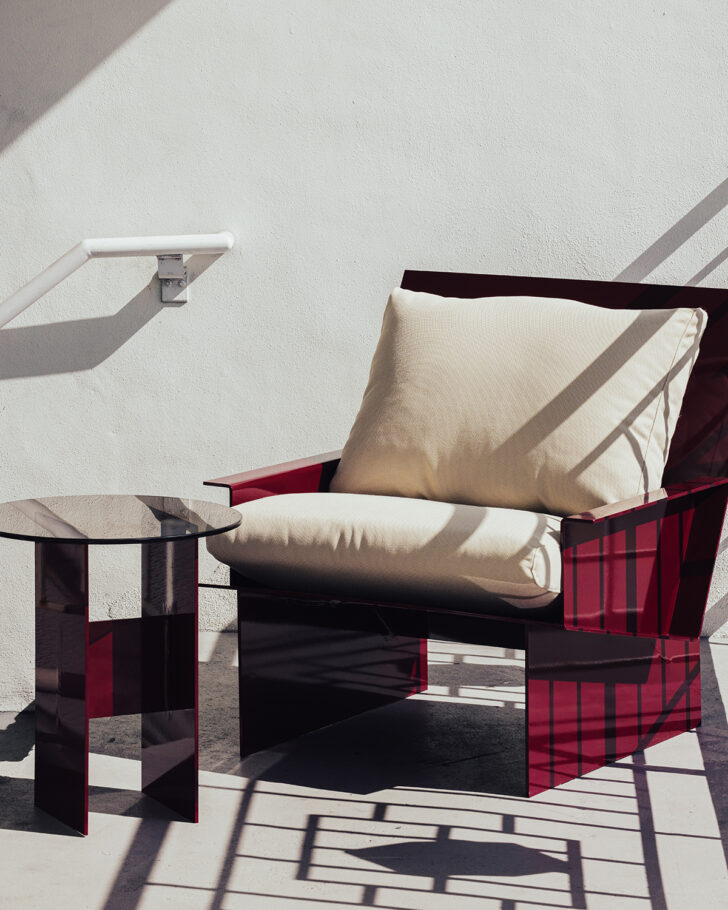
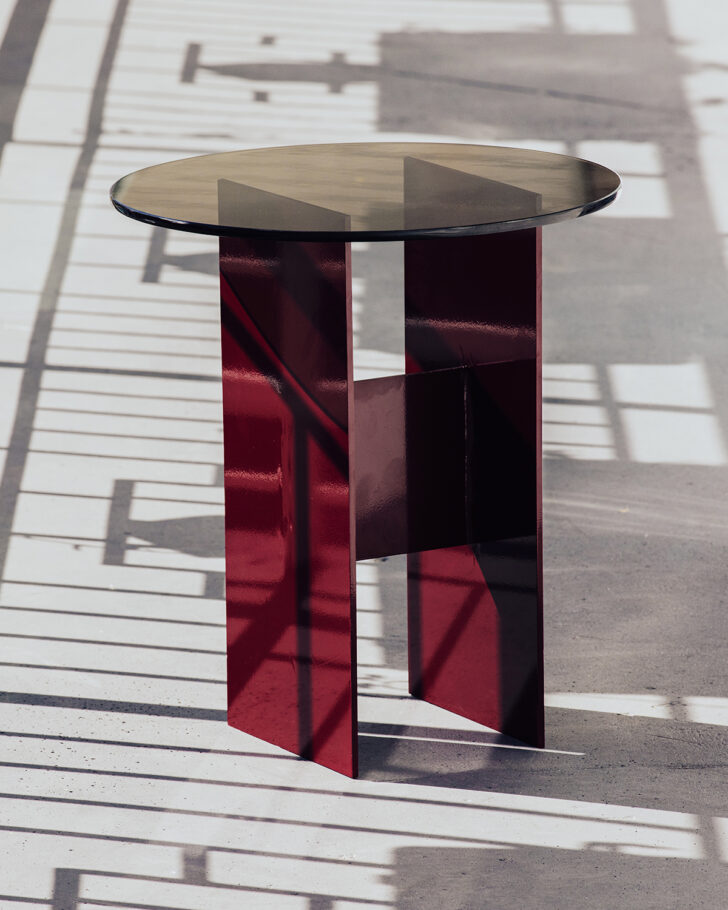
Was there something specific that prompted you to use sheet aluminum?
J: Aluminum can be one of the most recyclable products out there. Most of our products are biodegradable. The glass and the brass are not biodegradable but they do go back into the nutrient flow of the world, as they degrade, unlike petroleum products. And aluminum has something like a 98 percent efficiency rating when it’s recycled. It’s one of the most circular-economy materials that you can think of.
M: I would love to be able to say we were looking up at the moon and wanted to capture the luster of it [laughs]. But if you go back to older interviews with us, we would always say “outdoors” when we were asked what’s next. We could not arrive on a material choice we both agreed with. Johann and I have fundamentally different tolerances for what the end consumer would find appropriate. I grew up in a world where outdoor furniture literally biodegraded in front of you. It got covered with lichen and fell apart and that was totally fine. Johann wanted to do better than that. Finding a material that we felt comfortable with — we went through so many, cork, steel, and stone. Aluminum ended up being the one.
In terms of the bed, it really came from a strong desire to introduce a completely different texture and tonal thing into the bedroom space. We could’ve done fabric and made it plush and soft but it’s decidedly hard, even though the color has a real softness to it. We wanted to do something that paired with the wood, that didn’t work against it, and that felt very now and luxurious – a moment of luxury that speaks to a certain sensibility for us today and moving forward.
J: We try to make everything elegant. Even the Highland collection, which is kind of Brutalist in its massive quality of shape mixed with material, it’s really elegant in the end, elegant in composition, in how refined the composition is. So, the Element bed is incredibly refined. There’s kind of nothing to it, but what there is to it is so aesthetically considered that it becomes really interesting.
The Element bed has these contrasts embodied in it, but it’s also just so seemingly simple. It looks a bit inevitable, like it’s always been there.
M: I really appreciate that, feeling like the work has always already been there. It’s just four planes. Some of the other beds were more complex in terms of their construction or components. This one just felt really right.

